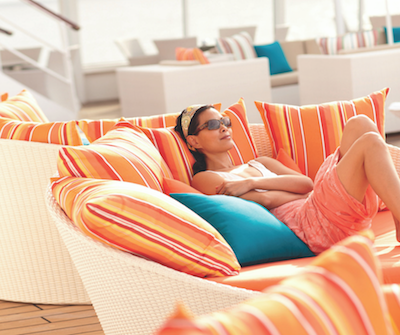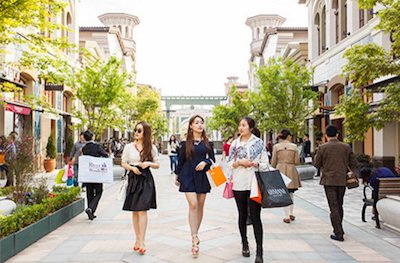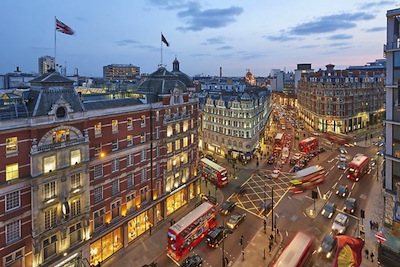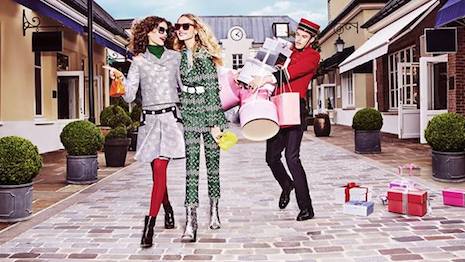In the face of a more difficult economic climate, strategy will become the differentiating factor between winners and losers in the luxury sector, according to new research from Bain.
The 15th edition of the Bain Luxury Study conducted for Altagamma found that for the third year, the personal luxury goods market was largely flat, declining from €251 billion in 2015 to €249 billion in 2016, or $262 billion. This slowed growth indicates a “new normal” in which consumer confidence is down and brands cannot rely on a favorable market to grow profits.
“Brexit, the United States’ presidential election and terrorism have all led to significant uncertainty and lower consumer confidence, hindering sales of personal luxury goods,” said the reports’ authors. “In this environment, companies no longer grow and generate profits merely by riding favorable economic tailwinds.
“Instead, we will see clear winners and losers. Management teams will need to implement a clear strategy to win and manage costs more closely.”
Challenging times
The overall luxury market, including hard luxury along with categories such as art, hospitality and cars, grew 4 percent in 2016 to €1.08 trillion, or about $1.14 trillion at current exchange. This minimal increase was the primarily the result of currency shifts rather than sales.
The luxury automotive market is seeing the strongest growth out of all categories, rising 8 percent this year thanks to a strong performance of high-end cars in China. In comparison, neither private jets nor yachts reported growth, as they have not been able to benefit from China’s luxury demand due to the country’s tight control on air space.
Travel and experiences were also winners, growing 5 percentage points faster than the overall luxury market, a reflection of consumers’ trading in tangible goods for memories. Luxury hospitality grew 4 percent, while upscale cruises saw an increase of 5 percent, particularly those which sailed to out-of-the-way ports.

Image courtesy of Crystal Cruises
As consumers prefer experiential purchases, food, wine and spirits and beauty also saw growth.
Luxury watches were down 8 percent at constant exchange rates, contributing to hard luxury’s 5 percent decrease.
Comparatively, casual apparel and accessories are on the rise, with luxury denim a €3 billion business, or $3.16 billion, and sneakers generating €2 billion, or $2.1 billion, in sales.
The rapid growth in the luxury market that was the norm in recent decades has been replaced by shallower increases. Bain predicts a compound annual growth rate of 3-4 percent through 2020, helped by China’s growing middle class, reaching about €280 billion, or $295 billion.
In order to remain competitive in this more challenging environment, Bain advises that companies monitor their operational costs and resource allocation more closely, something they may not be accustomed to.
About two-thirds of luxury sales come through wholesale channels, but the leading retail format is declining as brands try to take back control of their selling experience.
Off-price retail sales are now 11 percent of the total luxury market, and 37 percent of luxury goods sales come from discounted merchandise.

Image courtesy of Value Retail
The traditional bricks-and-mortar store is also losing market share to ecommerce. Today, online sales are 8 percent of the luxury market, trailing only the United States and Japan.
Shopping at home
For the first time since 2001, consumers bought 5 percent more luxury goods at home than abroad. This was seen in China, where customs has become stricter on goods entering the country to fuel domestic purchases and stave off the grey market.
Referencing numbers from Global Blue, Bain noted that Germany and France saw reduced tax-free spending as tourism slowed following terror attacks. The post-Brexit United Kingdom, on the other hand, saw its duty-free sales rise 8 percent as shoppers traveled to get what were essentially discounts following the pound’s fall (see story).

Image courtesy of Mandarin Oriental, Hyde Park London
The trendiest travel destinations double as the world’s most peaceful nations, which in turn has resulted in surging interest and appeal among affluent travelers, according to a new report from Travel Leaders Group.
Looking at the top ranked countries in the “2016 Global Peace Index,” Travel Leaders Group found that Iceland, New Zealand and Portugal rate the highest among international destinations for wealthy American travelers. Understanding on-trend destinations that appeal to luxury travels can help high-end hospitality brands establish a presence or revamp existing experiences in a given location due to an influx of foreign visitors (see story).
As tourists represent a large market for luxury, agencies and brands are finding ways to attract these shoppers.
Tourists visiting Italy in the first two months of 2016 had an average transaction amount of $831 at current exchange rates, per a report by Global Blue.
In the same time frame, tax-free purchases in Italy increased by 6 percent in comparison to the year-ago, highlighting the European country as a tourist’s preferred market to spend. Global Blue is a tax-free shopping agency that provides duty-free information to consumers visiting European markets and boasts a brand network of 270,000 shopping partners (see story).
“As the environment becomes more demanding, companies will need to rethink their strategies to win,” said the report. “Management agendas should include themes such as revitalizing domestic demand, adapting to volatile tourism flows, engaging customers more effectively, tailoring assortments to local preferences, determining the right role for stores in an increasingly omnichannel environment and increasing productivity.”
from Travel and hospitality – Luxury Daily https://www.luxurydaily.com/personal-luxury-goods-spending-slows-as-consumer-confidence-drops/
via Your #1 Source to Finding Luxury & Designer Goods, Handbags & Clothes at or Below Wholesale: Click Here.

No comments:
Post a Comment